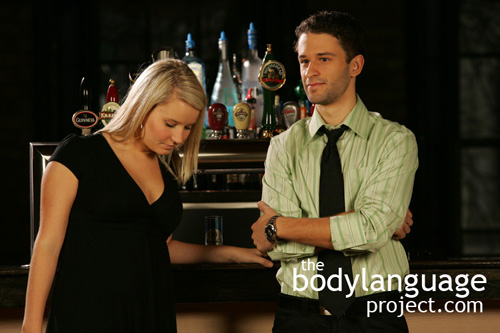An employee enters his boss’s office as he has called a meeting to discuss the possibility of a pay raise. The employee sits down and raises his case. He has been there for several years and feels that he is due for some form of compensation for his loyalty. As he states his case, the subordinate employee appropriately mirrors his boss’s subtle nuances, he touches his face when he does and fixes his hair, and leans forward when he does. As the employee hits on a particularly sensitive issue, his overtime commitment, which the boss has been firm about being nearly mandatory for the position, the boss quickly moves back into a full body steeple by leaning back with his hands locked behind his head and crosses his legs in a figure four. What should the employee do? The answer is simple, he should concede this stance to his boss as its obvious through his body language that he’s not willing to let this issue slide. When it comes to mirroring, it is always best to use it for rapport building, and not to induce hostility. The boss wins when it comes to dominance and should the employee mirror his steeple, would suffer, perhaps not immediately but at a subconscious level this body language will grind on his boss. Eventually, and if repeated with consistency, the boss would sense something wasn’t right which might lead to even worse hours or job details. The boss would only perceive his negative feelings about his employee as “dislike” or that “something isn’t quite right.” If the goal was to usurp his position and take his job, the employee might consider mirroring his stance to set an air of equality or superiority. Similarly, two high ranking individuals should mirror each other to signal that they hold similar power and won’t be easily pushed over.
A dominant person always has more choice when it comes to mirroring than less dominant people. A boss that wants to build rapport with his employee can acceptably let his guard down and mirror his actions. This can be particularly handy when the goal is to welcome a new worker whom is particularly tense or nervous. The boss should still refrain from picking up nervous cues, but he should feel welcome to mirror any other gesture. Therefore, when considering the use of mirroring, it is important to note the relative status in the hierarchy. The rule of thumb is that the most dominant individual calls the shots in mirroring, and so long as gestures aren’t dominant displays, others should feel free to follow to successfully build rapport.




